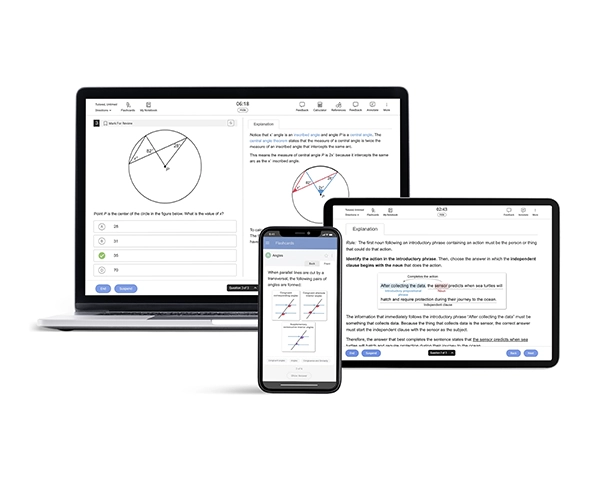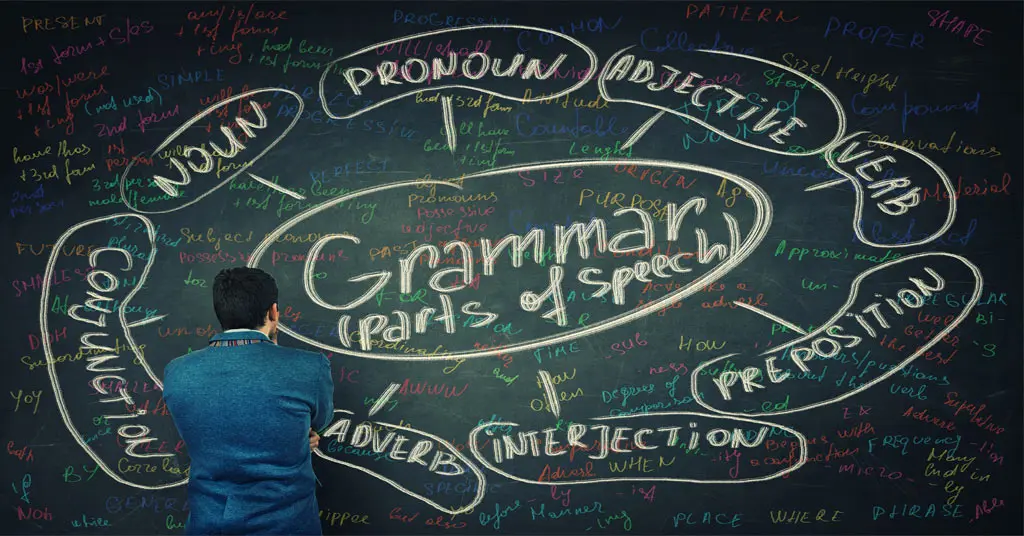Some questions on the Writing section of the SAT® exam will ask you to assess pronoun agreements. You will need to pinpoint when a pronoun does not match its antecedent and select an answer choice that resolves the error.
Let’s take a look at what pronoun agreement means and a few pointers to help you with your SAT pronoun agreement practice.
The Basics
The pronoun, a word used to replace the noun in a sentence, needs to match the antecedent. Failure to do so is what results in faulty pronoun agreement. Questions related to pronoun agreement are common on the SATⓇ Writing test, and it may be a difficult error to recognize because of how often we misuse pronouns in everyday speech. The easiest way to monitor pronoun agreement is to keep track of the noun and the verb related to it. This will help you judge whether the pronoun used is right or needs to be corrected.
Sometimes, the pronoun and antecedent disagree in number and other times they disagree in person.
Here is an example of a disagreement in number:
The boys forgot his shirts.
The pronoun “his” is in the singular form, but the antecedent “boys” is plural. To correct this sentence, switch the pronoun to the plural “their.”
Correction: The boys forgot their shirts.
Here is an example of a disagreement in person:
On your way to Jake’s house, Sarah stopped to get them lunch, and she ate it together.
The pronoun “your” is second-person, but Sarah is third-person. To correct this sentence, “your” needs to match its antecedent, Sarah, by switching into the third person “her.”
You would also need to make a number agreement correction for “she” to match its antecedent, Sarah and Jake.
Correction: On her way to Jake’s house, Sarah stopped to get them lunch, and they ate it together.
Some Tips for Success
1. Find Out What the Antecedent Is First
This is important to be sure that you are tracking the right agreement. Don’t get mixed up in who is doing what action or what is being replaced by the pronoun.
2. Specific Rules for Non-Gendered Singular Pronouns
The English language does not have an ungendered singular pronoun, and you cannot replace the noun describing a person of unclear gender with third-person plural pronouns. Using “their,” “theirs,” “they,” or “them” is incorrect. On the SAT test, you must use “he,” “she,” or “he or she.”
Here is an example of a sentence the SAT test might expect you to edit:
The winner of the race will receive their trophy at the finish line.
We do not know the gender of the person who will win the race, but we cannot use the third person plural pronoun “their.”
Corrections:
The winner of the race will receive his or her trophy at the finish line.
The winner of the race will receive her trophy at the finish line.
The winner of the race will receive his trophy at the finish line.
The test asserts that you cannot use third-person plural pronouns to refer to a single person.
3. Collective Nouns Can Also Trip Up Pronoun Agreement
Words that refer to a group of people can confuse you as well. Words like “team,” “class,” or “group” describe multiple people as a singular thing. Because of their function, collective nouns must have a pronoun that is singular in order to agree.
Here is an example of a pronoun disagreement with a collective noun:
The team had their last game this weekend.
The antecedent team needs a singular pronoun in order to agree:
The team had its last game this weekend.
The sentence would also be correct if “the team” was to be replaced by a plural description:
The players on the team had their last game this weekend.
4. Interchanging “You” and “One”
When giving instructions or advice, the less specific “one” can be interchanged with “you.” But remember, if you are using these pronouns, you must do so consistently.
Here is an example of an inconsistent usage of “you” and “one:”
After you measure the ingredients, one should add them to the bowl.
To correct this sentence, choose one pronoun and stick with it.
After you measure the ingredients, you should add them to the bowl.
After one measures the ingredients, one should add them to the bowl.
5. Relative Pronouns
Relative pronouns, like “who,” “whom,” “when,” “where,” “which,” and “that,” are used to refer to very specific things. Like other pronouns, they must agree with their nouns.
Here is an example of a disagreement between a relative pronoun and its antecedent.
I went to the park that I learned to ride a bike.
Because the relative pronoun “that” refers to a location, it should be replaced with “where.”
Correction: I went to the park where I learned to ride a bike.
Read more about SAT relative pronouns
6. Editing To Improve the Antecedent
Pronouns require an antecedent. Without an antecedent, the pronoun lacks specificity and becomes illogical.
Here is an example of a pronoun without a clear antecedent:
On her way, Jane called them and asked when they close.
Correction: On her way, Jane called the store and asked when they close.
On the other hand, some pronouns have too many antecedents.
Here is an example of a pronoun with too many antecedents:
Sarah, Shelly, and Jane walked to the elementary school to pick up her sister.
Correction:
Sarah, Shelly, and Jane walked to the elementary school to pick up Shelly’s sister.
Sarah, Shelly, and Jane walked to the elementary school to pick up their sister.
7. That, This, and Which Often Lack an Antecedent
This error may be hard to spot because we often use these pronouns without an antecedent.
Here is an example of an unclear antecedent with the pronoun “this”:
The glass table was cracked when the movers unpacked it; this was very upsetting to Shelly.
“This” needs a clear antecedent, and can be edited by adding information:
The glass table was cracked when the movers unpacked it; this accident was very upsetting to Shelly.
Try UWorld’s SAT Prep Course for SAT pronoun agreement practice questions. Our practice tests, detailed answer explanations, and performance tracking tools can provide you with an effective study plan and valuable experience with exam-style questions. You can discover your weaker areas and work to improve them through these resources as well. Try it out to boost your scores on the SAT Writing test!




